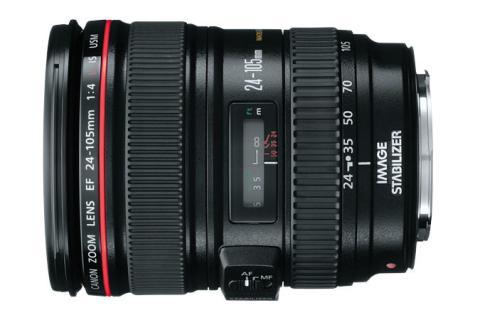Disclosure: This post may contain affiliate links. I earn a small commission of product sales to keep this website going.
Canon lens designations
When choosing a Canon lens it’s easy to get confused with all of those letters in the names…USM? IS? L? EF-S? What does it all mean?
The following is a quick primer to explain it all, and we’ll be following that up in the near future with individual reviews and specifications for each lens. Look at the ring of the following image for an idea of how Canon lenses are designated.
Canon Lens Mounts
 EF
EF
Electronic Focus. This is the standard mount for Canon cameras. This’ll work on all Canon SLRs though it behaves differently on full-frame cameras and APS-C “cropped sensor” cameras.
On APS-C cameras, like the Canon 7D, 60D, and Rebels, the sensor has a 1.6x crop factor meaning that the sensor will see a 50mm lens as an 80mm lens – so it kind of gets “zoomed in”. On full-frame cameras like the Canon 1D, 5D, and 6D, the sensor will see a 50mm lens as 50mm.
EF-S
Electronic Focus, Short Back. On these lenses, the rear lens element is closer to the sensor, “widening out” the image as it hits the sensor.
Remember that 50mm lens that is an equivalent 80mm on an APS-C sensor? With the EF-S design, an APS-C sensor now sees that 50mm lens as 50mm. So if you have a camera with an APS-C sensor, the focal length of an EF-S lens will be true.
Note: EF-S lenses are not compatible with full-frame sensor cameras.
EF-M
EOS M. Designed specifically for EOS-M mirrorless cameras. All other Canon mounts will work with the EOS-M with a mount adapter, but EF-M lenses will not work on other Canon bodies.
Canon Lens Features
The next numbers on the ring are the focal length and minimum aperture. The focal length range is displayed in millimeters and the minimum aperture will appear as a ratio; f/4 is shown as 1:4 and f/2.8 is shown as 1:2.8.
L
The “luxury” series. Identified by a red ring in front of the focus ring.
These are the top-of-the-line Canon lenses and are considered the “professional” lenses in Canon’s lineup. These lenses feature specifically engineered multi-coated ultra-low dispersion glass. The result is a reduction in color fringing (chromatic aberrations) and an increase in sharpness and contrast.
Available on EF lenses only.
IS
Image Stabilizer. This is what we all need for shaky hands at slower shutter speeds. Special gyroscopes within the lens detect shake and then the lens elements “float” inside the chamber to keep the image steady.
My rule of thumb for normal EF lenses on a full-frame sensor is to never have my shutter speed slower than the focal length, i.e. for 50mm my slowest shutter speed should be 1/50 sec or else I’d risk a blurry image.
With image stabilization, I can go at least one stop slower, or 1/25 sec in this example. Newer lenses can reduce shake up to four stops.
USM
Ultrasonic Motor. These are very fast, precise focusing motors that can also be focused manually without destroying the motor. In addition, they conserve battery power.
STM
Stepping Motor (to focus). A different type of motor than USM. These motors are slower, but smoother, than ultrasonic motors and are generally very quiet, ideal for video shooting.
DO
Diffractive Optics. These lenses can generally be designed smaller and lighter than conventional lenses using a special diffractive coating on the glass. It’s generally found in larger zoom lenses to allow for a smaller design while reducing chromatic aberrations.
TS-E
Tilt-Shift. These are specialty lenses that tilt the plane of focus and can also shift the lens to correct for perspective – more on that later.
Canon Lens Letters Tell You A Lot About the Lens
I think we got everything!
You may also see an “II” after these designations, which just denotes “second generation”.
With this knowledge, we can now go through each lens in specific detail with an understanding of how the lens is constructed based on the letter designations.
